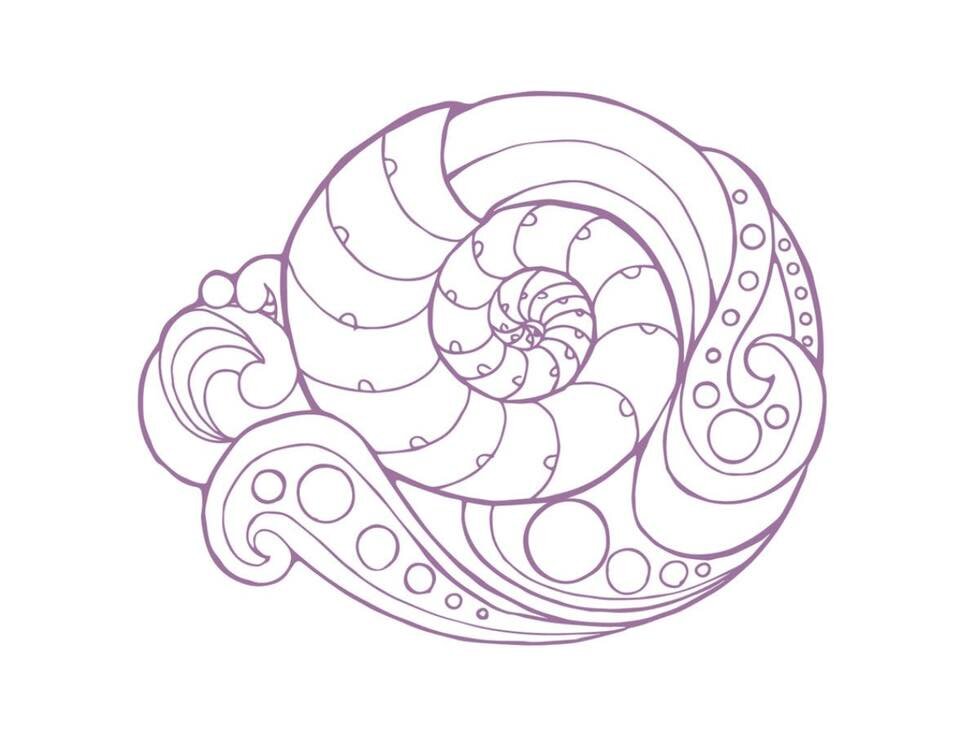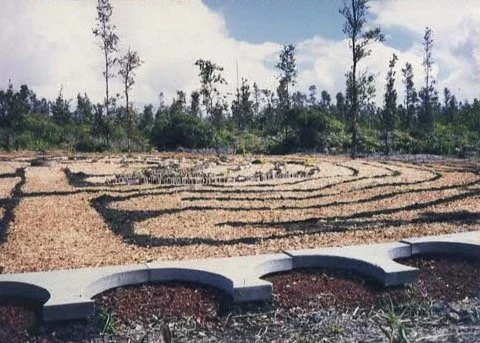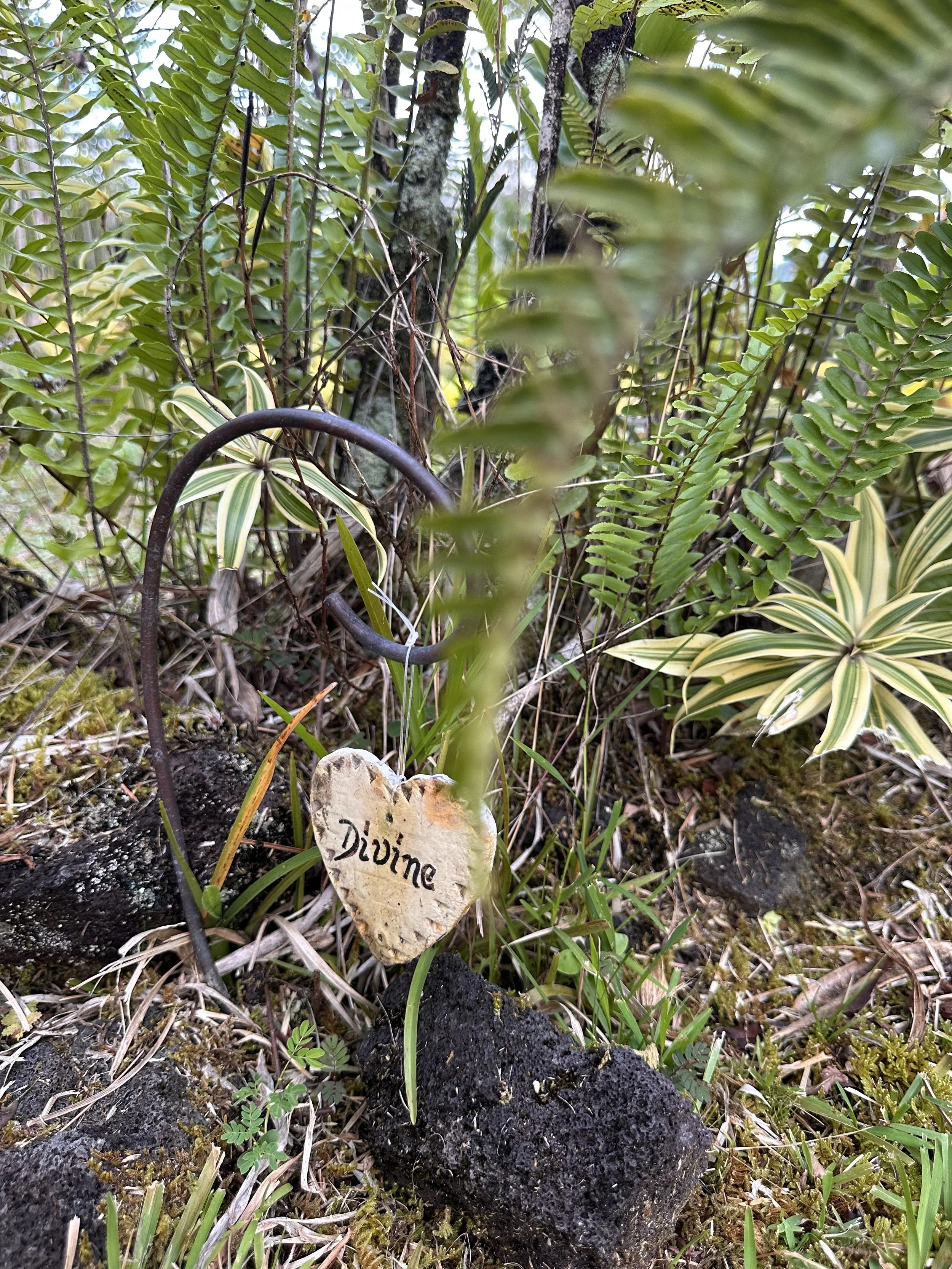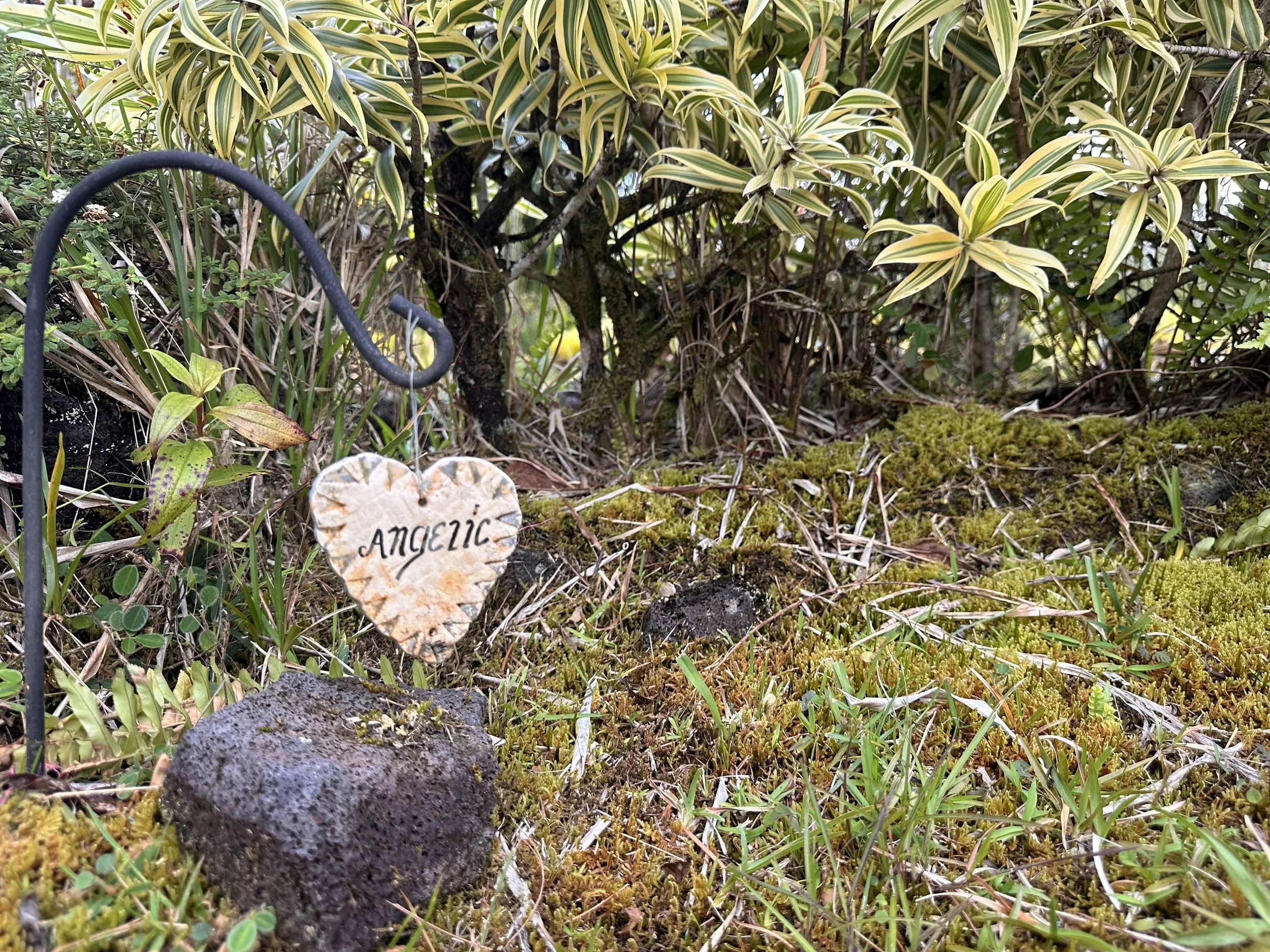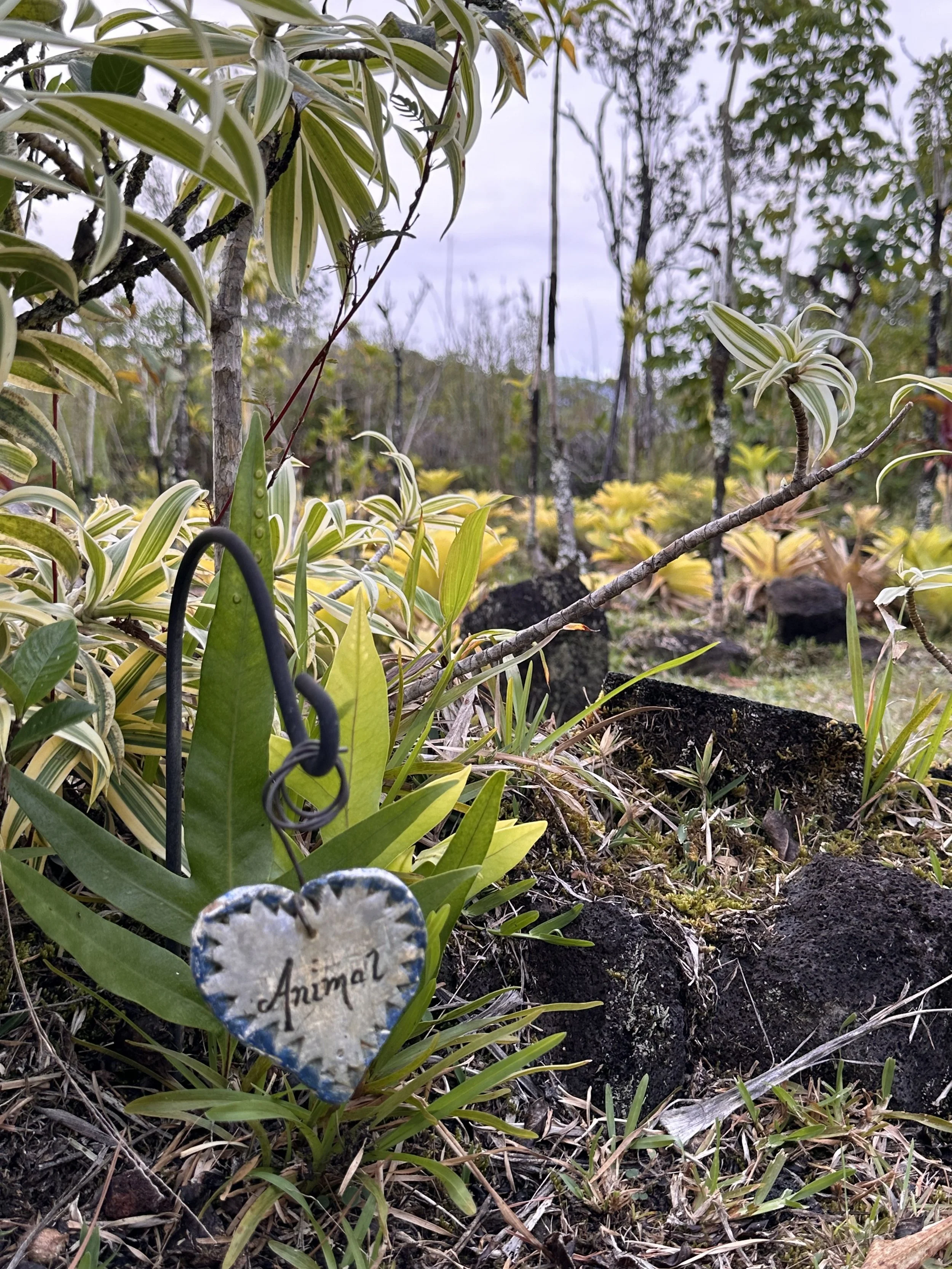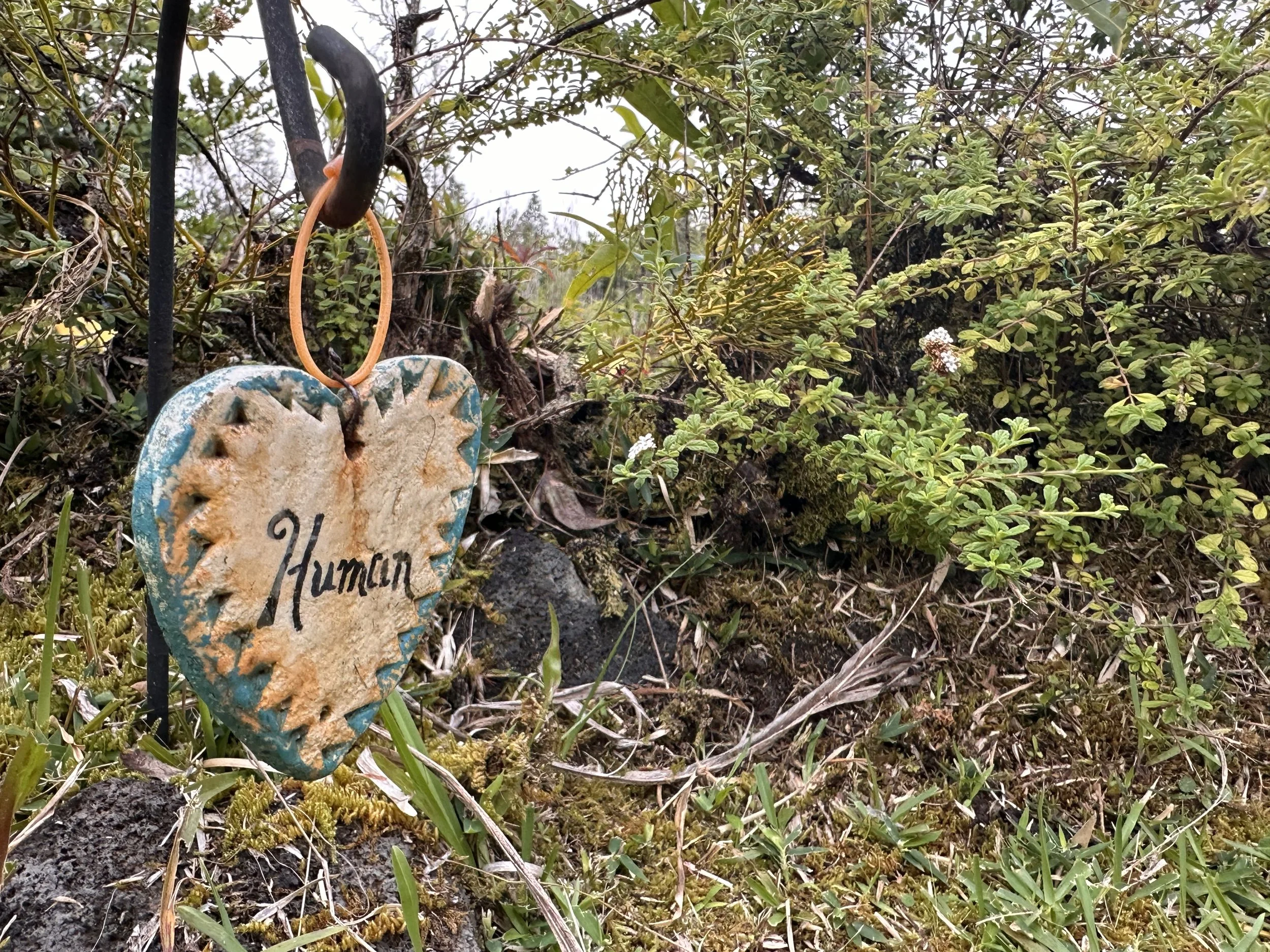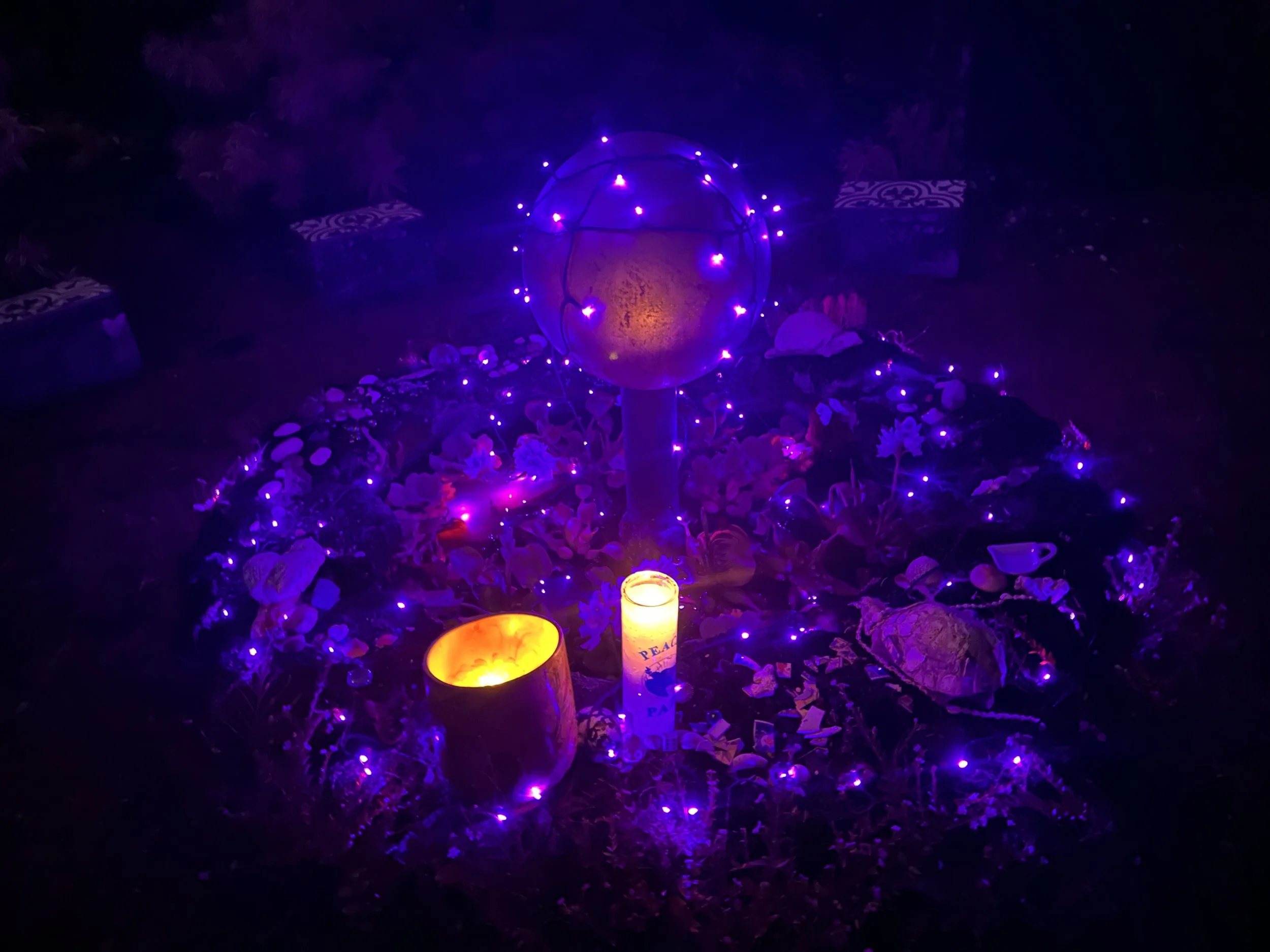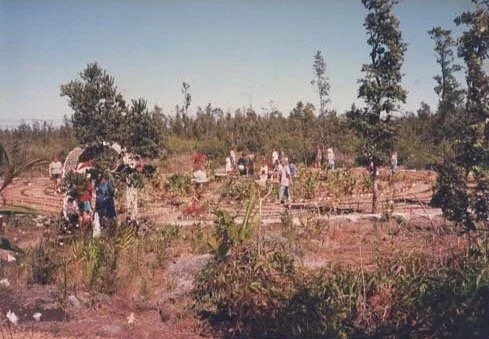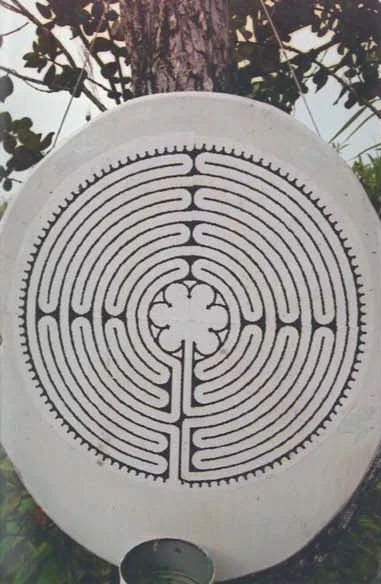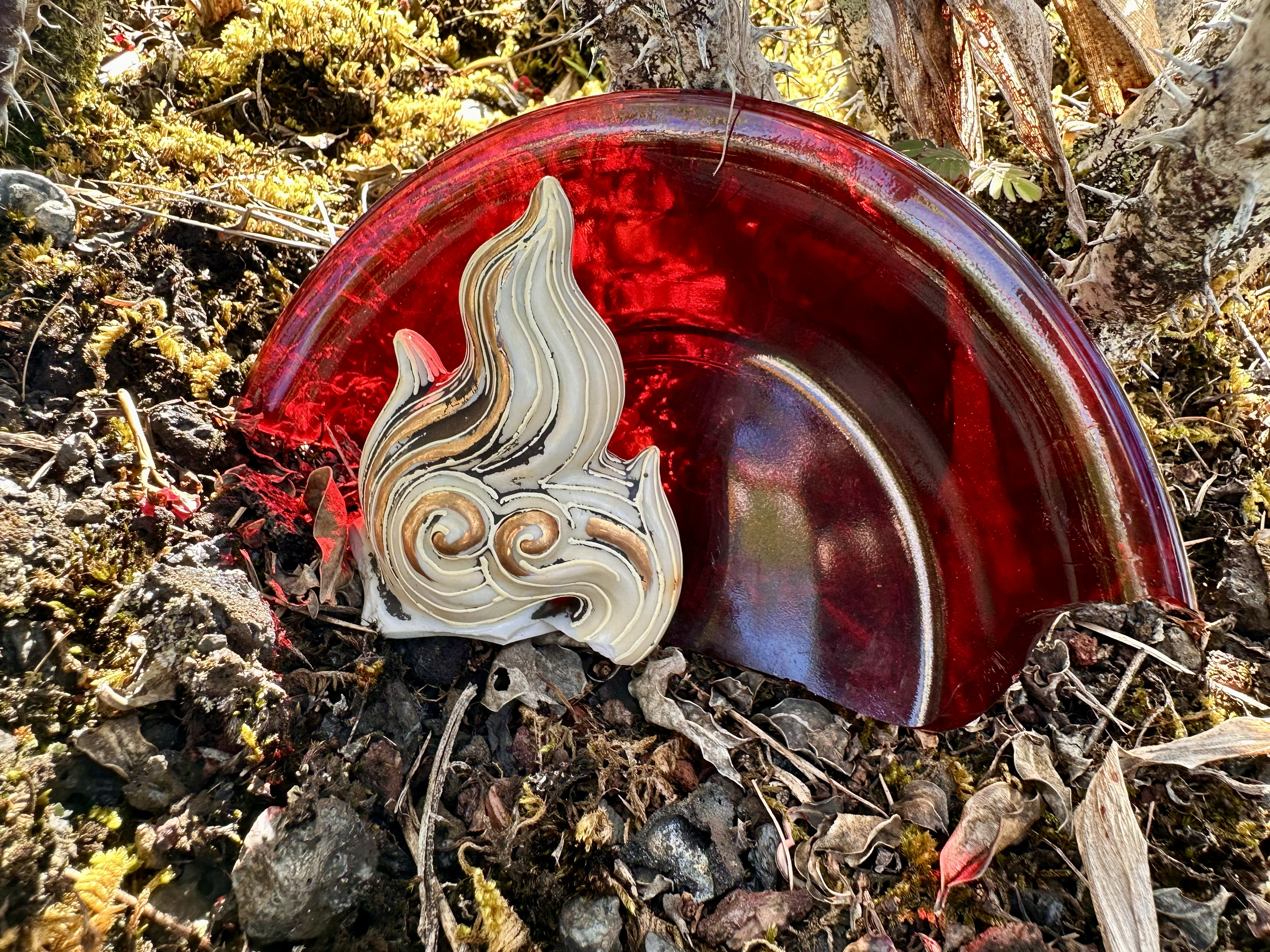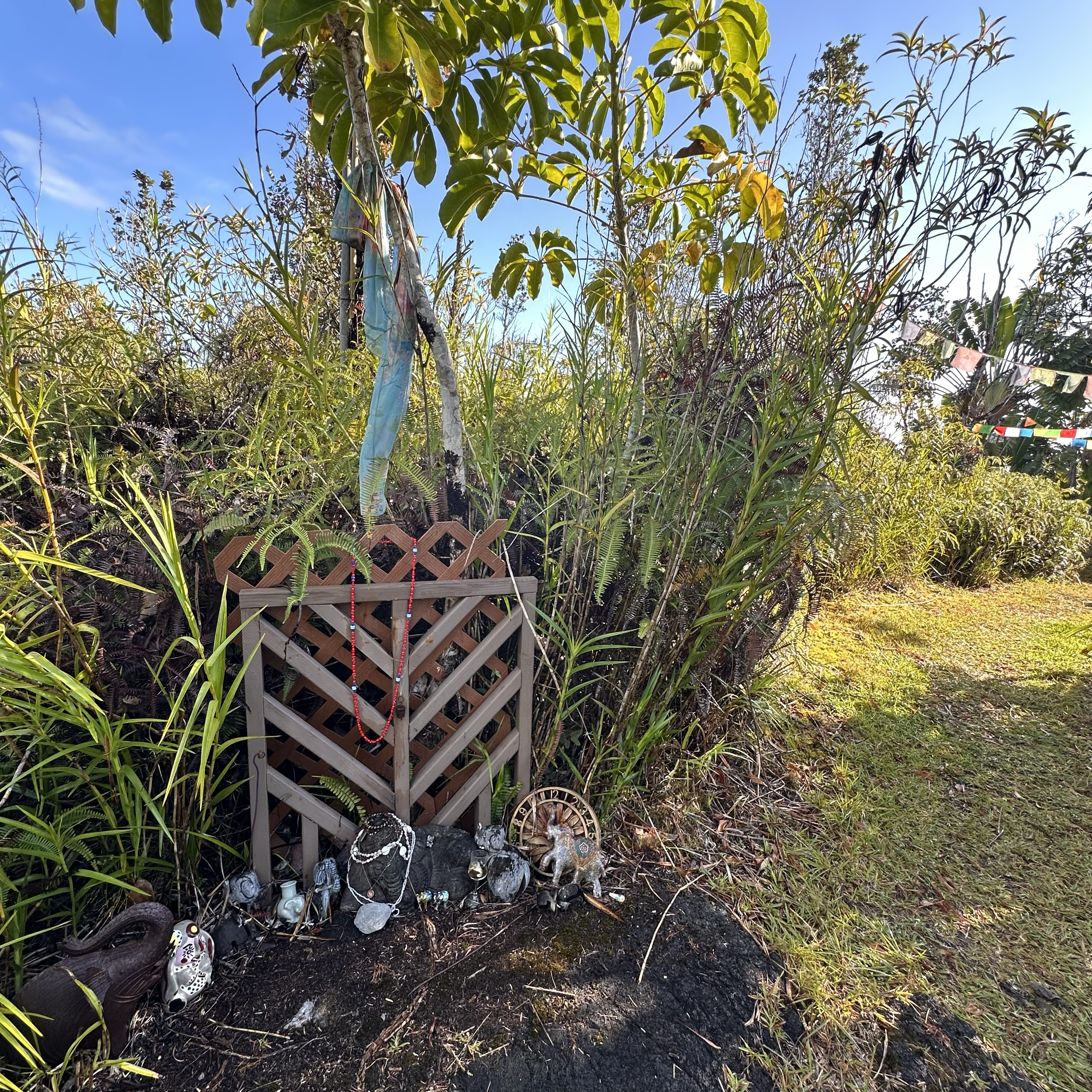
‘Awapuhi Labyrinth
Meaning and History
“My calling to create a labyrinth came out of nowhere.
We bought an extra lot, and I had purchased Lauren Artress’ book Walking a Sacred Path, on a whim, not even knowing what it was about.
I had never walked a labyrinth before building one.”
— Christie Wolf, ‘Awapuhi’s Builder
Christie Wolf and John Luchau built ‘Awapuhi Labyrinth in 1999 as an experiment in creating sacred space. These photos are scanned originals she sent in the mail, organized chronologically with stories painstakingly handwritten on the backs of each one.
They lived on 26th Avenue in Hawaiian Paradise Park and purchased a second acre lot on 4th Avenue, known locally as ‘Awapuhi Avenue, which is how the labyrinth received its name. ‘Awapuhi means “wild ginger plant” in the Hawaiian language, also known as “shampoo ginger”. Besides shampoo, it was used to scent and dye tapa cloth.
Above, Christie walks along 4th, still a gravel road in those days, as they begin to clear the space: “Just a one acre lot — covered with uluhe fans and ohia lehua.”
Below, a red cinder “Service Road” goes in along the lot line to help them drive a truck to the labyrinth site in back SE corner. ‘Awapuhi sits atop basalt lava flows. While soil has accumulated over time, and crevasses and lava tubes network below the crust, leveling and planting is not as simple as digging a hole. Luckily, here, no bulldozing was needed. Just some weedwacking, some leveling with a tractor blade, and later, within the circle, one weekend of jackhammering down a hill.
Design
‘Awapuhi is an eleven-circuit pattern and double-sized replica of the 13th-century design inlaid into the floor of the Chartres Cathedral in France. The path that winds through ‘Awapuhi’s 90-foot diameter covers four-tenths of a mile one way. So, if you follow the path all the way in and all the way back out again — then add the distance you have walked from the road and back — you will have traveled approximately one mile.
Understanding some of the terminology and symbolism in this Medieval design may help you appreciate the construction: lunation, labrys, and rosette.
Lunation
These crescent moon-shaped “teeth” of cusps and foils create a halo around the outside of the labyrinth. The word lunation comes from the 14th-century Latin word for a period of time between one new moon and the next, and they are believed to comprise a lunar calendar.
At ‘Awapuhi, the lunation were created from concrete castings. John made two molds for lunations, then “cast 113 or 114 (?) I forget! Huge project!” Each concrete mold had to cure and then be carted from 26th Avenue to the site on 4th. Such an enormous task!
You can see the brand new lunation in the center of the collage below — bright and white! —and Christie shared that Eve Hogan, who went on to create The Sacred Garden on Maui, “opined that our lunation were one of the best parts of ‘Awapuhi,” and that Lauren Artress had said that “outdoor labyrinths without lunations ‘felt hollow’ and makers should find ways to add them.”
Labrys
Within a labyrinth, the labrys refers to the curved areas that separate the 180-degree turns in the path — the only part of the labyrinth where you don’t step!
The word labrys also refers a symmetrical double-headed axe that was a revered religious symbol from early Crete associated to feminine qualities, power, and divinity. Labrys and labyrinth have the same etymological root, with labyrinth believed to mean “house of the double axe” or “house of the goddess” in the Lydian language.
While this particular etymology is between 4,000 to 5,000 years old, labyrinths in one form or another have existed in every civilization, across every continent. Their origins are as mysterious as their uses are varied.
One thing is universally agreed-upon: They benefit the participant who interacts with them. Please take your time and enjoy your own experience
Rosette
At the center of the labyrinth, you will find a six-petalled shape called a rosette. Together, these petals are believed to represent the six kingdoms of existence: mineral, vegetable, animal, human, angelic, and divine.
Look for six ceramic hearts — one in each petal of the rosette — that name them.
The Path
In the beginning, the path was formed of of black cinder walls with wood chips painstakingly raked crossed its expanse. Christie shares that lunations were still being placed as they were cured and finished when tour helicopters began finding the pattern from the air, circling back for another look.
Christie began incorporating more plants into the labyrinth’s design by making raised beds within the labyryses and rosettes, using “trash tree” stakes. It got things started, but growing took lots of time!
Eventually, Christie gave up the endless and costly task of spreading wood chips and gave in to the paths of “Puna grass”, defined by the East Hawaii Master Gardeners as “short weeds”! She was absolutely delighted to find a small 20” lawn mower for free at the transfer station that fit the paths perfectly.
Many walkers who have enjoyed the labyrinth for decades report that the grass is softer on the feet and cooler in the heat. Today, the paths are kept trim by a weed whacker.
The Center
In addition to the six-petaled rosette, you will find a small pond with a gazing ball. As the labyrinth was finished, the pond was much higher up, build around a large tire walled in with stones. Much later, they brought a jackhammer back to bust up the lava rock and sink it halfway into the ground.
Originally glass, Christie cast about for another solution when the original gazing ball shattered one day, probably weakened by exposure to the elements. It was only meant to be an indoor light fixture!
She replaced it with a hard plastic buoy that was painted silver, giggling when people call it a “gazing ball” thinking that it really doesn’t reflect much. However, my own experiences with the labyrinth during night walks do show a sweet and ghostly glow reflected in its well-loved surface.
The Gazebo
The gazebo was build to offer shade and shelter to walkers before and after their walks, a purpose it still serves to this day.
From its innovative yurt-style framing of equilateral triangles to its reuse of local materials, the gazebo serves as a personal and community processing space.
In this beautiful photo of the labyrinth’s first community gathering, the gazebo had not yet even been roofed in. Later, a roof was added — which is still in place today! — from the distinctive blue material of a discarded water catchment tank cover.
Gatherings
So many gatherings have been held here over the years, and we wish this tradition to continue! Christie believes they had a pretty good turnout for the first group gathering, aided with interest from the local Science of the Mind Church (Center for Spiritual Living, now on Paradise Drive).
The labyrinth’s first sign was a replica of the Medieval pattern with a tin can underneath to hold a candle for night walks.
Christie was delighted that Eve Hogan facilitated that gathering. As a regional director of The Labyrinth Society and, much later, owner of The Sacred Garden on Makawao, Maui, Eve has contributed much to the use of labyrinths for healing purposes in the islands and globally.
Gifts
You will notice — in addition to the flora and fauna throughout the labyrinth — an abundance of shells, tiles, trinkets, chimes, art pieces, and much more that have all been lovingly gifted to the site by labyrinth walkers going back to its origination in 1999.
Each object was left by someone who found special and personal meaning in placing it, and many people return years or even decades later to delight in finding an old friend.
We invite you to leave a gift of your own.
It’s appropriate to arrange your offering in a niche — the labryses and walkway back to the labyrinth are particularly populated — while remaining conscious of all the other walkers who have come before you.
Let go of expectations on your return visit, as your gift may shift locations or be absorbed by the labyrinth over time.
Gifting to the labyrinth is an exercise in pure giving and detachment.
Come Visit Us!
The ‘Awapuhi Labyrinth is non-denominational. We welcome agnostics, atheists, Buddhists, Christians, Hindus, Muslims, Pagans, Wiccans, and all others. Please enjoy and respect this space and each other.
Find ‘Awapuhi Labyrinth on the Big Island of Hawai’i at 15-1601 4th Avenue between Kaloli and Paradise in Hawaiian Paradise Park.
Look for the little Free Library on the road out front and then follow the footpath.
Find other Hawai‘i labyrinths on World-Wide Labyrinth Locator and sign up below to get on the mailing list to hear about upcoming events.

